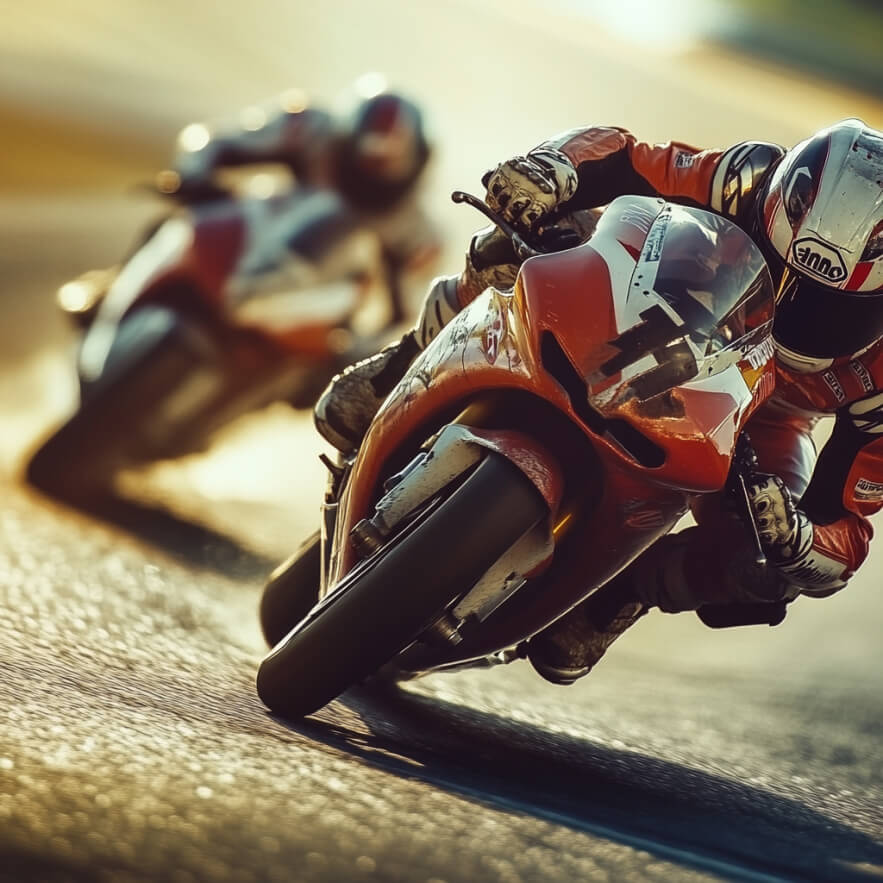Motorbike racing is a sport where every second, every manoeuvre and every decision can be the line between victory and accident. Racers push themselves and their bikes to the limit, using complex tactics, precise calculations and advanced racing techniques. However, the most important part of a successful performance is not only speed, but also the ability to manage risk and ensure safety in extreme conditions.
The foundation of successful piloting is not only speed, but also a sound approach to strategy, manoeuvres and racing techniques. Conscious control over every move, the ability to predict the consequences of your actions and the willingness to adapt to changing circumstances – that’s what distinguishes professionals from amateurs. In this article we will talk about how racers find the balance between aggressive attack and safety, what technologies help to reduce risks, and how psychological training allows them to maintain control even in the most dangerous situations.
Main sources of risk in racing
Race tracks are high-risk zones, where any miscalculation can lead to a crash. The most common causes of accidents include:
- Rider error. Poor trajectory selection, late braking, insufficient grip control, or misjudged maneuvers.
- Mechanical failures. Brake malfunctions, engine failure, or a sudden tire puncture can result in severe incidents.
- Challenging weather conditions. Rain, strong winds, and temperature fluctuations impact traction and make handling more difficult.
- Contact with competitors. In the battle for position, collisions often occur, sometimes leading to massive pileups.
- Fatigue and physical strain. In long races, riders endure extreme stress. A momentary loss of focus can be disastrous.
Despite all risks, motorsport is constantly evolving, with new technologies and methodologies improving rider safety each year.
Safety equipment and protective technologies
Modern advancements greatly reduce the risk of injury, even in high-speed crashes. Every piece of gear plays a crucial role in protecting the rider.
- Helmets with MIPS technology. These advanced helmets reduce rotational forces during impacts, protecting the brain.
- Aerodynamic racing suits. Made from ultra-durable materials, they include built-in airbags and protect against asphalt friction.
- Reinforced gloves and boots. These prevent injuries to hands and feet during crashes.
- Electronic safety systems. In MotoGP, sensors analyze a rider’s movements and activate protective mechanisms when necessary.
Modern technologies lower injury risks, but ultimately, a rider’s best protection is their own skill and composure.
Tactical approach to risk reduction
Racing strategies involve not only attack and overtaking but also conscious risk management. To minimize danger, riders use the following tactics:
- Choosing the right moment to overtake. Waiting for a safer section of the track is often wiser than taking a reckless risk.
- Monitoring tire condition. Worn-out tires can lead to loss of traction, especially in corners.
- Assessing competitors. Some riders are more aggressive than others—if an opponent ahead is prone to risky moves, keeping a safe distance is a smart choice.
Preparing for extreme situations. Training on wet surfaces, simulating emergency scenarios, and practicing instinctive motorcycle control help riders react correctly in critical moments
Psychological preparation of a rider
A rider’s mindset plays just as important a role as their technical skills. Cool-headed calculation and emotional control help riders avoid panic and make split-second decisions.
- Focusing on execution, not fear. The best riders don’t dwell on the possibility of crashes—they concentrate on making the right moves.
- Analyzing mistakes. Reviewing past races helps riders avoid repeating dangerous situations.
- Training reflexes. In an emergency, a rider shouldn’t have to think—reactions must be instinctive and automatic.
Motorcycle racing always carries risks, but it is precisely this balance between speed, strategy, and self-control that makes it such a thrilling sport. The best riders are not just fast—they know how to manage their abilities, analyze situations, and make split-second decisions.
Safety is not just about equipment and technology—it is about awareness, technique, emotional control, and the ability to adapt to changing track conditions. Those who master the fine line between aggression and caution become true champions.
Rider errors, mechanical failures, challenging weather conditions, contact with competitors, and fatigue are the primary risk factors.
Advanced helmets, aerodynamic suits with airbags, reinforced gloves and boots, and electronic safety systems help reduce injury risks.
Focusing on execution rather than fear, analyzing past mistakes, and training reflexes ensure quick and effective decision-making under pressure.

